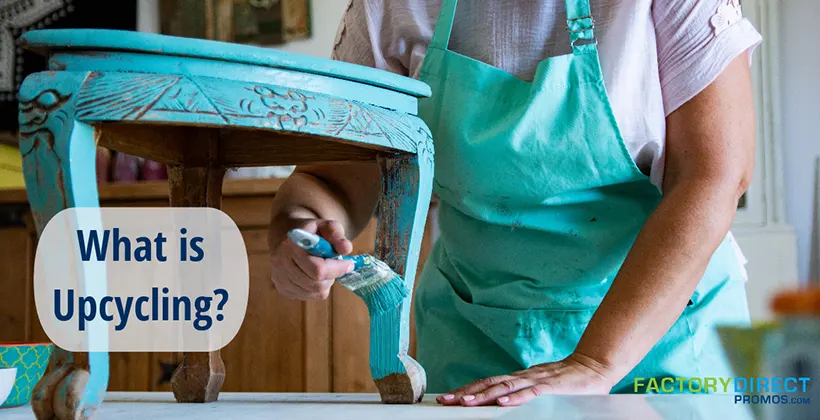Green Tips: What is Upcycling?

There are many reasons why people go green or make environmentally responsible choices. Utilizing sustainable or reusable products and recycling are some of the more well-known ways to go green. Upcycling is another way to give materials a new lease of life and do right by the planet.
What is Upcycling?
Upcycling is the process of turning an item that is past its prime into something new and useful. This sounds similar to recycling, but recycling is a process in which materials are broken down and re-manufactured into something new and useful. With upcycling, the initial object is simply repurposed, while with recycling, the initial item is made into something entirely new. Examples of upcycling include repurposing an old dresser into a bathroom vanity or creating a quilt from a collection of old t-shirts. In these instances, the initial items like the dresser and t-shirts were no longer useful or needed in that form, so turning them into something new or upcycling them gives them a new purpose.
What are the Benefits of Upcycling?
Upcycling provides various benefits, from going green to saving green. Most people have their reasons for choosing to upcycle, but the benefits are clear.
Improve the Waste Stream
Upcycling keeps items out of landfills, at least for a bit longer. The upcycled objects still provide use and function, although they are different uses and functions than were originally intended. There is only so much available space in landfills, and while projections indicate there will continue to be enough landfill space for a couple more decades, now is the time to take action to keep items that still have a purpose out of landfills.
Conserve Energy
Recycling is necessary to build a sustainable waste stream, but only when recycled items have no further use. The recycling process uses a lot of energy (albeit less energy than manufacturing items using virgin materials), and upcycling helps conserve energy in the short term.
Upcycling also reduces the need and consumption of new items made from virgin materials. Manufacturing items using virgin materials requires a lot of energy, but upcycling can eliminate the need for new items made from virgin materials.
Keeps Items You Value
Upcycling is a great way to hold onto items if there is a sentimental attachment or you simply want to reduce your environmental impact. Finding a new use and purpose for things you like but may not need is what upcycling is all about. You can continue to enjoy a piece of furniture or a patterned piece of fabric but in a new way.
Save Money
Upcycling can potentially save money. Purchasing brand-new items adds up, while repurposing items you already own or can buy second-hand often comes in under budget. What’s more, creating a one-of-a-kind upcycled item allows you to enjoy something custom without spending the money on a bespoke piece.
Be Inspired
Upcycling may require some creativity and DIY skills, but it’s a great way to create custom items that fit how you live. Social media is full of great examples and ideas to upcycle things. YouTube and Pinterest are an almost endless source of upcycling inspiration.
